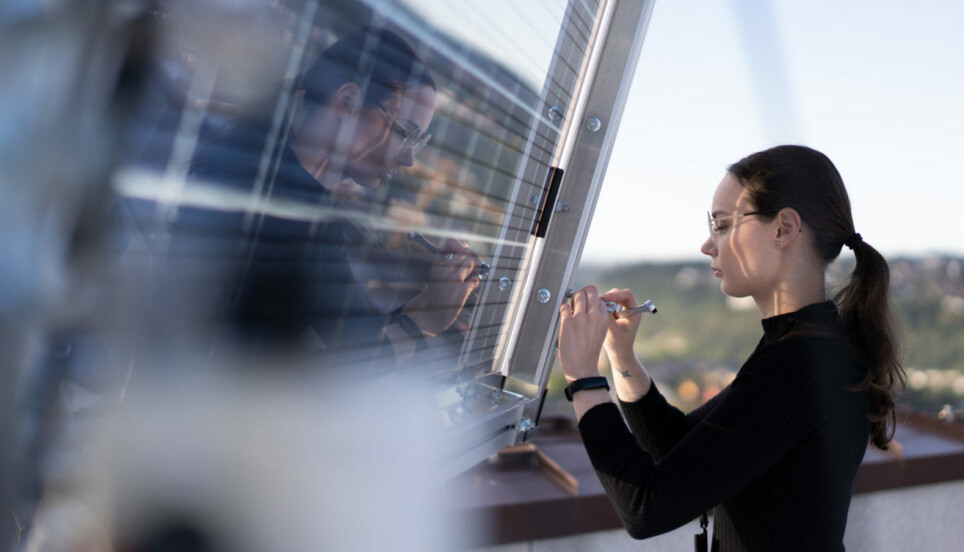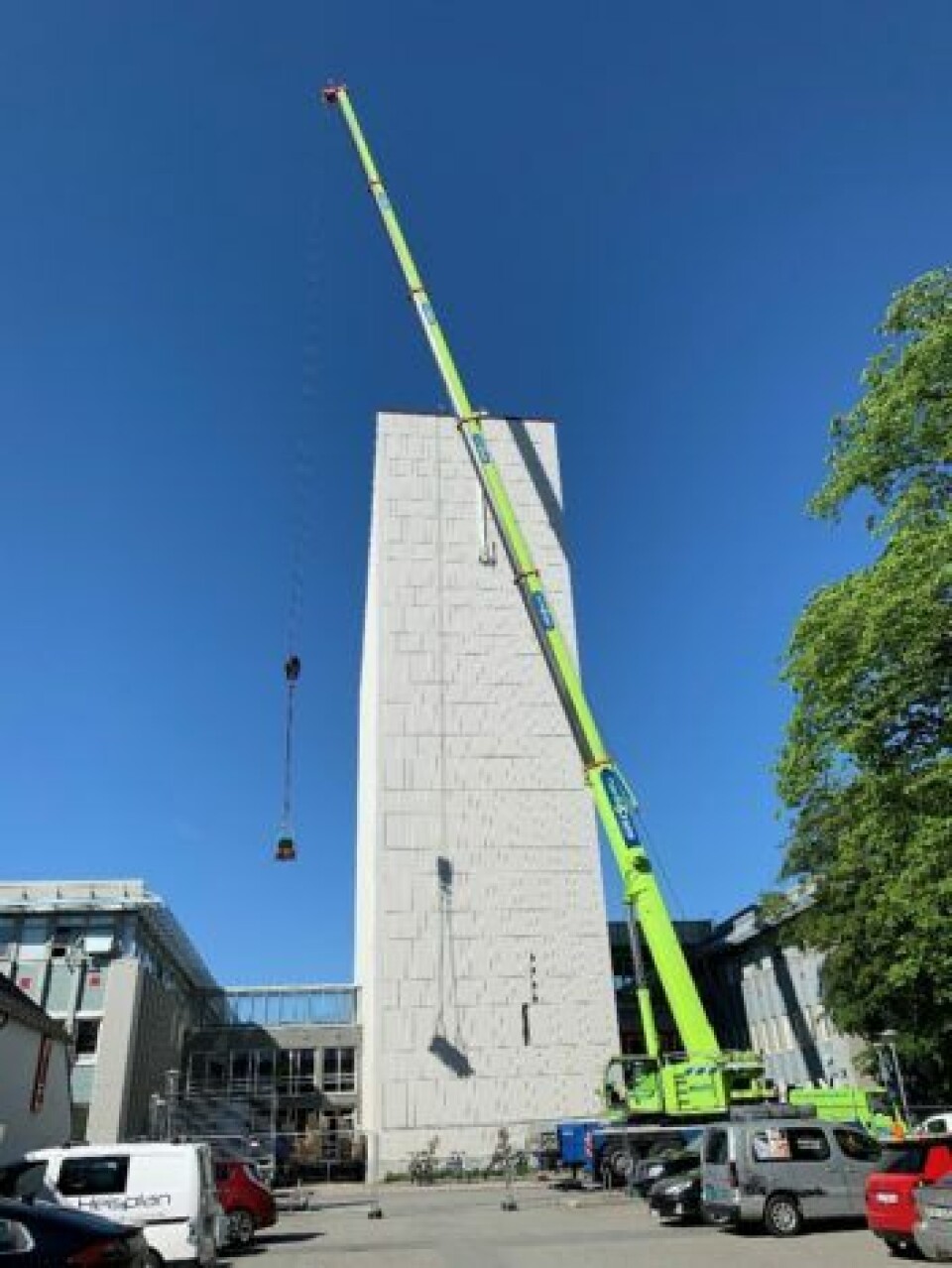THIS ARTICLE/PRESS RELEASE IS PAID FOR AND PRESENTED BY SINTEF - read more

A new high-rise lab for the development of super-efficient solar panels
Here, conditions are optimal for research into solar panel performance at Nordic latitudes.
14 floors above the busy student walkway ‘Stripa’ on the NTNU campus in Trondheim, Norway, research scientists and technicians are working unremittingly to complete the installation of an outdoor solar panel laboratory.
Their aim is to build a new facility on the roof of one of the campus high-rise blocks that will enable researchers, students and, not least, industrial stakeholders to obtain new insights into the exploitation of what is currently reckoned to be most cost-efficient source of renewable energy – solar power.
Cheaper than wood panelling
“Solar panels are now very inexpensive,” Project Manager and solar panel researcher Eivind Øvrelid at SINTEF says. “According to figures from PVinsights, they’re in fact cheaper per square metre than wood panelling. This must be one of the world’s best renewable energy fun facts."
The laboratory has been granted formal status as part of the Norwegian national infrastructure for solar panel research, and SINTEF will be leading the work required to gather data and find new ways of making solar panels even more efficient. The new facilities have been given the name Alfa Centauri (the Norwegian spelling of the triple star system Alpha Centauri in the constellation Centaurus).
“The triple star system Alpha Centauri is the closest neighbour to the sun in the Milky Way,” Martin Bellmann says. He is the SINTEF researcher responsible for the installation.
“The name has been chosen because the solar panel facility on the roof of the high-rise block is the closest location to the sun in Trondheim,” he says.
When completed, the laboratory will be made available to all research communities studying solar panel performance in Norway.
“Our aim is to develop as a research hub, or ‘umbrella lab’, where organisations and research groups can work together – just as long as the focus is on solar energy,” Bellman says.

‘Dancing’ solar panels
The equipment that now dominates the Trondheim skyline is at the leading edge of global technology. Among their other features, the panels are bifacial and can absorb solar radiation on both their front and rear sides – ‘dancing’ in time as the sun progresses across the sky. In other words, they will always adopt an orientation to the sun that optimises energy absorption.
“We’ll also be conducting experiments using different kinds of roofing materials and reflector elements with the aim of optimising radiation absorption and reducing fouling and decomposition of the panels,” Bellmann says. "We’ll be looking into the entire value chain – from the raw materials to the finished product, as well as investigating how we can recycle solar panels when they have to be replaced."
The researchers will also be running simulations to see how efficiently the panels perform under all conceivable conditions and, among other things, will use the laboratory to test new solar panel module designs before they come onto the market.

Not only light, but also heat
“An additional focus of our research will be to see how we can capture the heat energy absorbed by the solar panels,” researcher Eivind Øvrelid says.
“A key future aim will be to exploit both the solar energy and the heat that are generated by the operation of solar panels,” Bellman says. “In fact, we currently exploit only 20 per cent of the energy absorbed by solar panels. The rest is converted into heat and we are looking to capture this as well. The more energy we can obtain from solar panel installations, the cheaper they will become. This will be good news for both consumers and the climate."
See more content from SINTEF:
-
New study: Even brand-new apartments in cities can have poor indoor air quality
-
Fresh hope for patients with chronic inflammatory bowel disease
-
Testing a giant ship: May take five kilometres to stop
-
A robot is helping researchers hunt for the best cancer warriors
-
Locomotives that run on diesel can be electrified
-
Where kelp is being turned into lab-grown meat





































